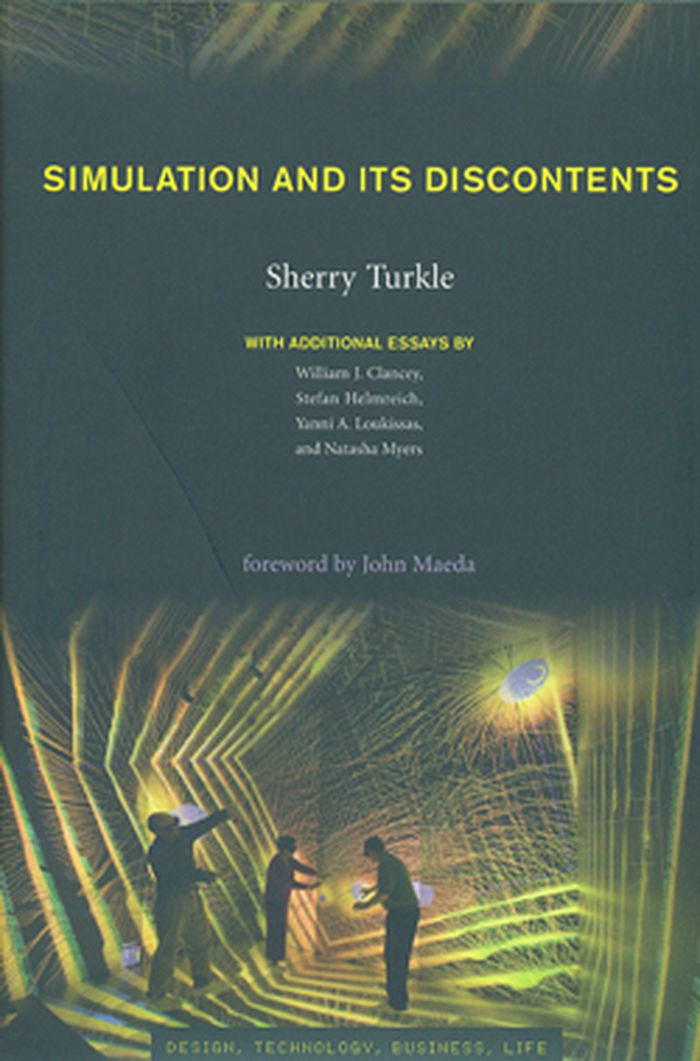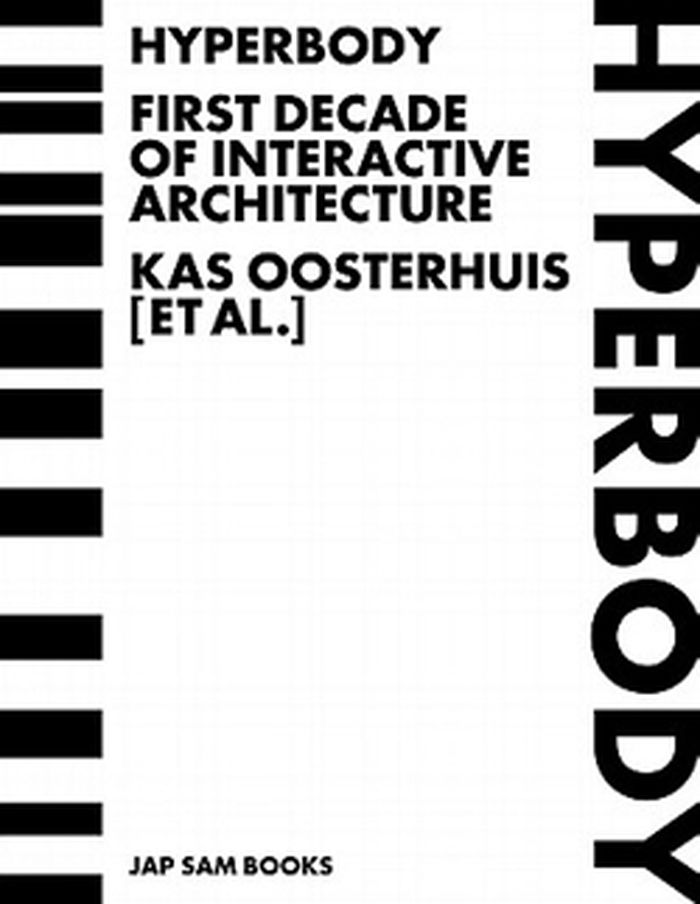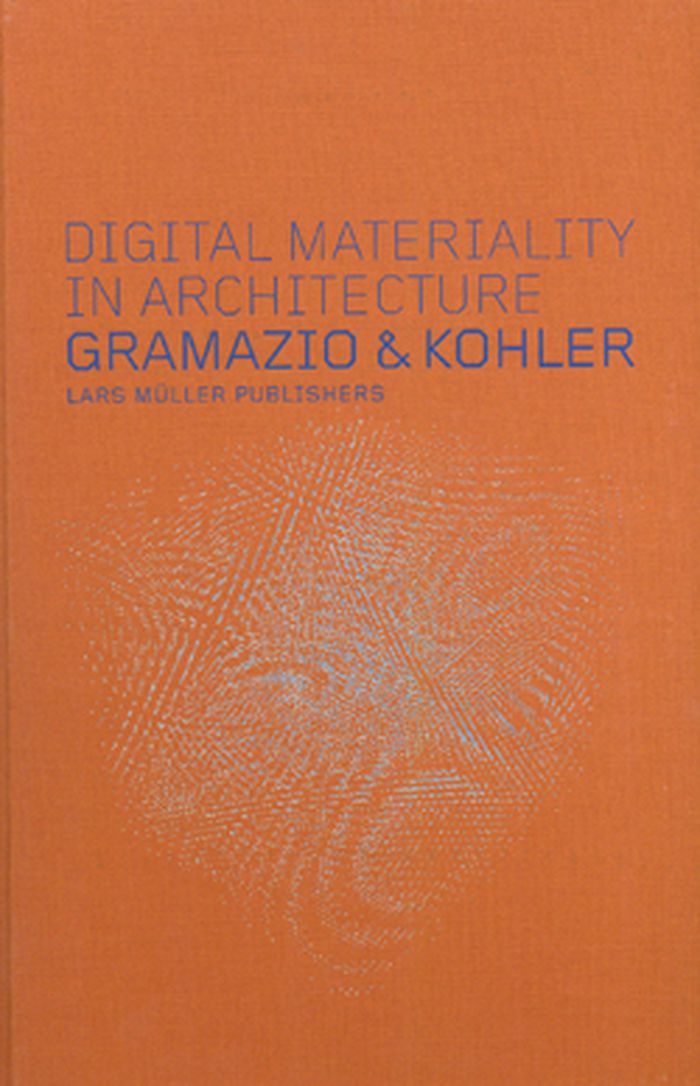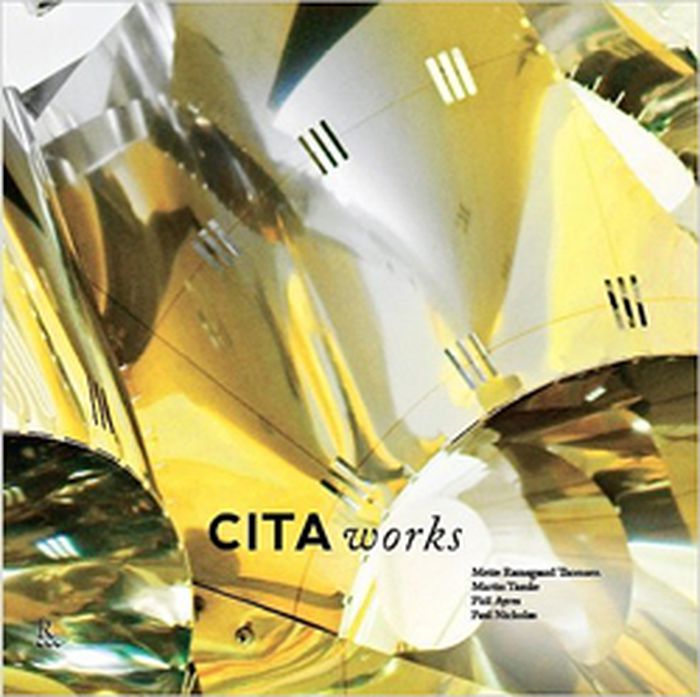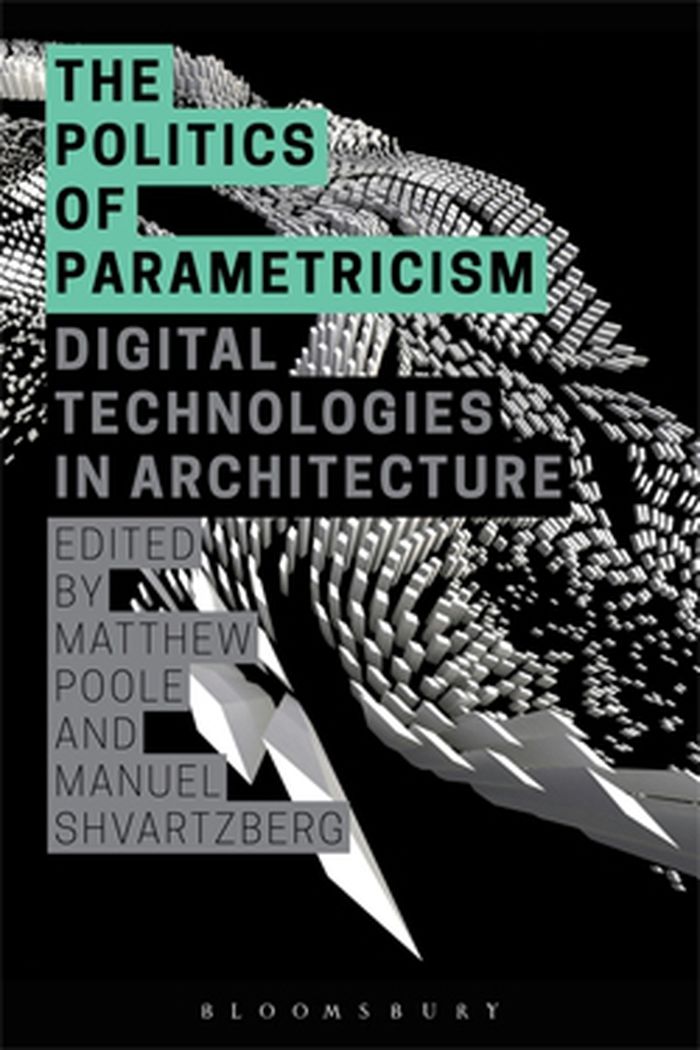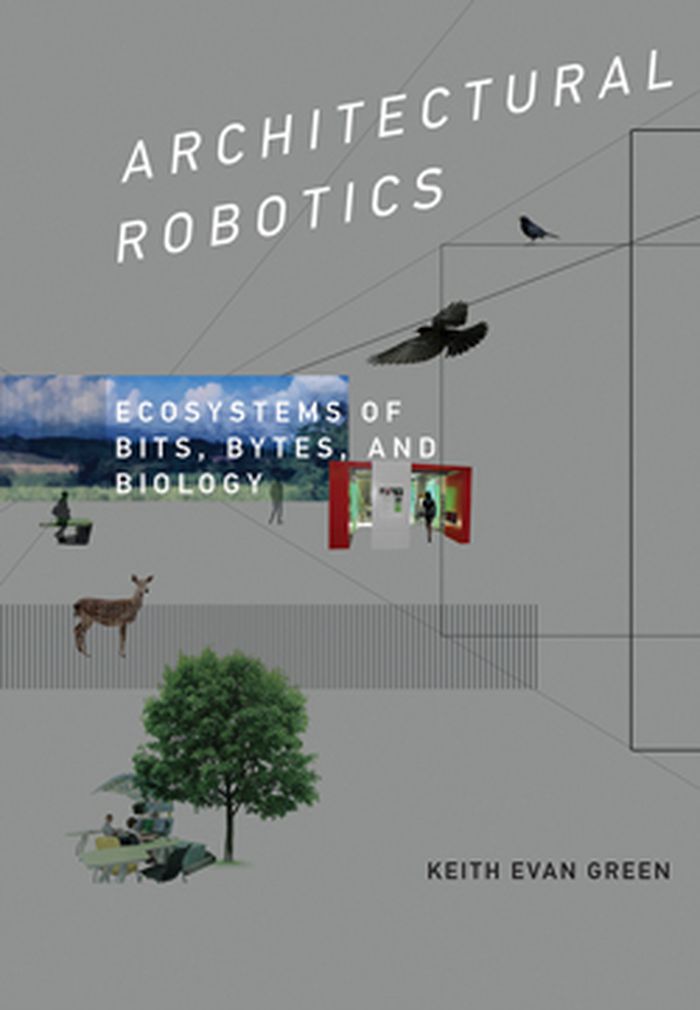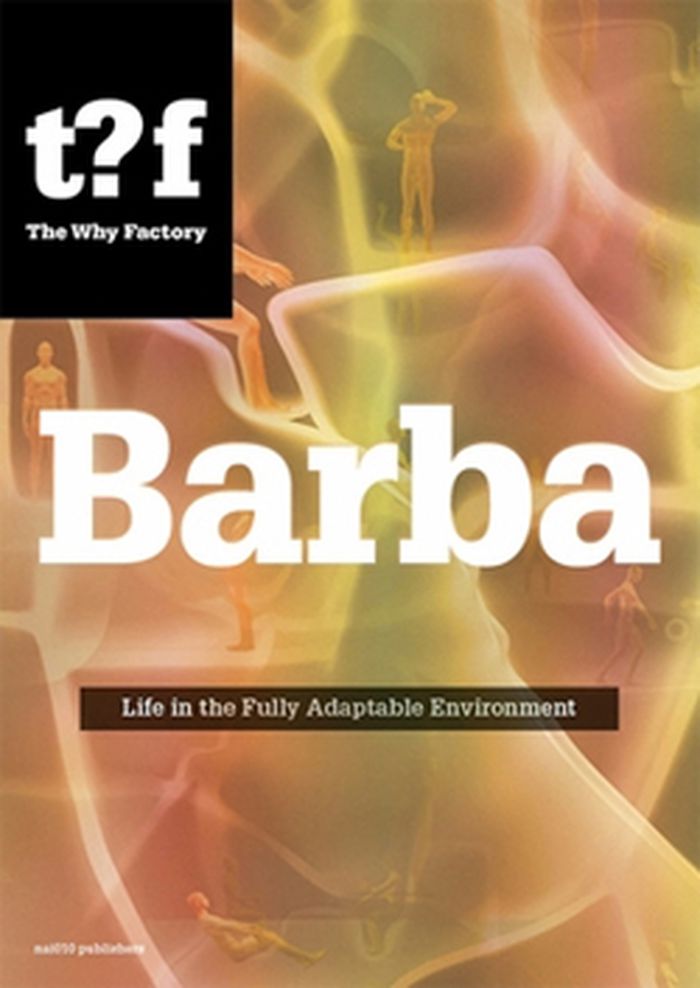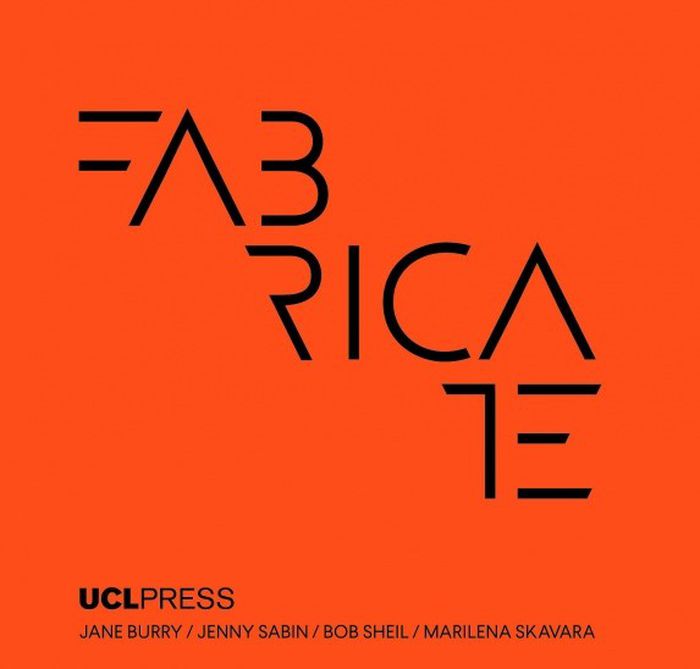$25.00
(disponible sur commande)
Résumé:
Echoing architect Louis Kahn's famous question, "What does a brick want?", Turkle asks, "What does simulation want?" Simulations want, even demand, immersion, and the benefits are clear. Architects create buildings unimaginable before virtual design; scientists determine the structure of molecules by manipulating them in virtual space; physicians practice anatomy on(...)
Simulation and its discontents
Actions:
Prix:
$25.00
(disponible sur commande)
Résumé:
Echoing architect Louis Kahn's famous question, "What does a brick want?", Turkle asks, "What does simulation want?" Simulations want, even demand, immersion, and the benefits are clear. Architects create buildings unimaginable before virtual design; scientists determine the structure of molecules by manipulating them in virtual space; physicians practice anatomy on digitized humans. But immersed in simulation, we are vulnerable. There are losses as well as gains. Older scientists describe a younger generation as "drunk with code." Young scientists, engineers, and designers, full citizens of the virtual, scramble to capture their mentors' tacit knowledge of buildings and bodies. From both sides of a generational divide, there is anxiety that in simulation, something important is slipping away.
Architecture numérique
livres
$29.95
(disponible sur commande)
Résumé:
This book celebrates the design ingenuity made possible by digital fabrication techniques. Author Lisa Iwamoto explores the methods architects use to calibrate digital designs with physical forms. The book is organized according to five types of digital fabrication techniques: tessellating, sectioning, folding, contouring, and forming. Projects are shown both in their(...)
Digital fabrications : architectural and material techniques
Actions:
Prix:
$29.95
(disponible sur commande)
Résumé:
This book celebrates the design ingenuity made possible by digital fabrication techniques. Author Lisa Iwamoto explores the methods architects use to calibrate digital designs with physical forms. The book is organized according to five types of digital fabrication techniques: tessellating, sectioning, folding, contouring, and forming. Projects are shown both in their finished forms and in working drawings, templates, and prototypes, allowing the reader to watch the process of each fantastic construction unfold. The publication also presents projects designed and built by emerging practices that pioneer techniques and experiment with fabrication processes on a small scale with a do-it-yourself attitude. Featured architects include AEDS/Ammar Eloueini, Atelier Manferdini, Brennan Buck, MOS, Office dA, Florencia Pita/MOD, Mafoomby, URBAN A+O, SYSTEMarchitects, Andrew Kudless/Matsys, IwamotoScott, Atelier Hitoshi Abe, Chris Bosse, Tom Wiscombe/EMERGENT, Thom Faulders Architecture, Jeremy Ficca, SPAN, GNUFORM, Heather Roberge, PATTERNS, Ruy Klein, and servo.
livres
janvier 2009
$82.95
(disponible en magasin)
Résumé:
Hyperbody, initiated by Kas Oosterhuis and headquartered at the Delft University of Technology, is a think tank on new ways of designing and creating non standard and interactive architecture. This huge book is the first time Hyperbody has published it collaborative projects and experiments within the real world of design and construction. The designers of the paradigm(...)
octobre 2011
Hyperbody : first decade of interactive architecture
Actions:
Prix:
$82.95
(disponible en magasin)
Résumé:
Hyperbody, initiated by Kas Oosterhuis and headquartered at the Delft University of Technology, is a think tank on new ways of designing and creating non standard and interactive architecture. This huge book is the first time Hyperbody has published it collaborative projects and experiments within the real world of design and construction. The designers of the paradigm changing MCAT system of architectural software, Hyperbody continues to play with software design and futurism, creating a broad and influential new dialog. This collection of writings looks at new software tools for real time interaction and parametric design and application of new production techniques file to factory production and mass customization, among other projects, applying cutting edge design methods and theories.
$44.90
(disponible sur commande)
Résumé:
Robots build! At their Program in Architecture and Digital Production at the Eidgenössische Technische Hochschule (ETH) Zürich (Swiss Federal Institute of Technology in Zurich), the architects Gramazio and Kohler have installed a research facility that is unique in the world. It is based on a computer-controlled industrial robot that produces construction elements(...)
Architecture numérique
septembre 2008, Baden
Digital materiality in architecture: Gramazio & Kohler
Actions:
Prix:
$44.90
(disponible sur commande)
Résumé:
Robots build! At their Program in Architecture and Digital Production at the Eidgenössische Technische Hochschule (ETH) Zürich (Swiss Federal Institute of Technology in Zurich), the architects Gramazio and Kohler have installed a research facility that is unique in the world. It is based on a computer-controlled industrial robot that produces construction elements directly from design data. The robot works flexibly with a tremendous range of tools and materials.
Architecture numérique
livres
$24.95
(disponible sur commande)
Résumé:
Entertaining, concise, and relentlessly probing, this book is a comprehensive introduction to a new type of city, an increasingly important system of virtual spaces interconnected by the information superhighway.
septembre 1996, Cambridge, Mass.
City of bits : space, place, and the infobahn
Actions:
Prix:
$24.95
(disponible sur commande)
Résumé:
Entertaining, concise, and relentlessly probing, this book is a comprehensive introduction to a new type of city, an increasingly important system of virtual spaces interconnected by the information superhighway.
livres
septembre 1996, Cambridge, Mass.
CITA works
$49.95
(disponible sur commande)
Résumé:
The Centre for Information Technology and Architecture (CITA) is an innovative research environment exploring the emergent intersections between architecture and digital technologies. This thoroughly illustrated book documents over 40 projects, events and research collaborations conducted between 2005 and 2014 by CITA.
CITA works
Actions:
Prix:
$49.95
(disponible sur commande)
Résumé:
The Centre for Information Technology and Architecture (CITA) is an innovative research environment exploring the emergent intersections between architecture and digital technologies. This thoroughly illustrated book documents over 40 projects, events and research collaborations conducted between 2005 and 2014 by CITA.
Architecture numérique
$49.95
(disponible sur commande)
Résumé:
Over the last decade, 'parametricism' has been heralded as a new avant-garde in the industries of architecture, urban design, and industrial design, regarded by many as the next grand style in the history of architecture, heir to postmodernism and deconstruction. From buildings to cities, the built environment is increasingly addressed, designed and constructed using(...)
The politics of parametricism digital technologies in architecture
Actions:
Prix:
$49.95
(disponible sur commande)
Résumé:
Over the last decade, 'parametricism' has been heralded as a new avant-garde in the industries of architecture, urban design, and industrial design, regarded by many as the next grand style in the history of architecture, heir to postmodernism and deconstruction. From buildings to cities, the built environment is increasingly addressed, designed and constructed using digital software based on parametric scripting platforms which claim to be able to process complex physical and social modelling alike. As more and more digital tools are developed into an apparently infinite repertoire of socio-technical functions, critical questions concerning these cultural and technological shifts are often eclipsed by the seductive aesthetic and the alluring futuristic imaginary that parametric design tools and their architectural products and discourses represent. The Politics of Parametricism addresses these issues, offering a collection of new essays written by leading international thinkers in the fields of digital design, architecture, theory and technology. Exploring the social, political, ethical and philosophical issues at stake in the history, practice and processes of parametric architecture and urbanism, each chapter provides different vantage points to interrogate the challenges and opportunities presented by this latest mode of technological production.
Architecture numérique
$42.00
(disponible sur commande)
Résumé:
In this book, Keith Evan Green looks toward the next frontier in computing: interactive, partly intelligent, meticulously designed physical environments. Green examines how these "architectural robotic" systems will support and augment us at work, school, and home, as we roam, interconnect, and age.
Architectural Robotics: Ecosystems of Bits, Bytes, and Biology
Actions:
Prix:
$42.00
(disponible sur commande)
Résumé:
In this book, Keith Evan Green looks toward the next frontier in computing: interactive, partly intelligent, meticulously designed physical environments. Green examines how these "architectural robotic" systems will support and augment us at work, school, and home, as we roam, interconnect, and age.
Architecture numérique
$57.50
(disponible en magasin)
Résumé:
How might nanotechnology—the manipulation of matter at the level of atoms and molecules—change buildings and cities in the future? The authors of Barba have imagined one possible future, shaped by a miraculous nanomaterial of the same name, which can be steered and altered in real time, changing its shape and size at will. With Barba, the authors speculate, the built(...)
Barba: Life in the Fully Adaptable Environment
Actions:
Prix:
$57.50
(disponible en magasin)
Résumé:
How might nanotechnology—the manipulation of matter at the level of atoms and molecules—change buildings and cities in the future? The authors of Barba have imagined one possible future, shaped by a miraculous nanomaterial of the same name, which can be steered and altered in real time, changing its shape and size at will. With Barba, the authors speculate, the built environment can be adapted almost immediately to every desire and every need. This volume, the latest in The Why Factory’s Future Cities series, envisions the dramatic potential of nanomaterial to change cities and architecture in the not-so-distant future, further explored in a series of interactive experiments and installations. Part speculative architecture, part science fiction, Barba follows an inhabitant of this flexible future world for a day, daring the reader to imagine life in a fully adaptable environment.
Architecture numérique
$49.95
(disponible sur commande)
Résumé:
Fabricate 2020 is the fourth title in the FABRICATE series on the theme of digital fabrication and published in conjunction with a triennial conference (London, April 2020). The book features cutting-edge built projects and work-in-progress from both academia and practice. It brings together pioneers in design and making from across the fields of architecture,(...)
Architecture numérique
février 2020
Fabricate 2020: making resilient architecture
Actions:
Prix:
$49.95
(disponible sur commande)
Résumé:
Fabricate 2020 is the fourth title in the FABRICATE series on the theme of digital fabrication and published in conjunction with a triennial conference (London, April 2020). The book features cutting-edge built projects and work-in-progress from both academia and practice. It brings together pioneers in design and making from across the fields of architecture, construction, engineering, manufacturing, materials technology and computation. Fabricate 2020 includes 32 illustrated articles punctuated by four conversations between world-leading experts from design to engineering, discussing themes such as drawing-to-production, behavioural composites, robotic assembly, and digital craft.
Architecture numérique
